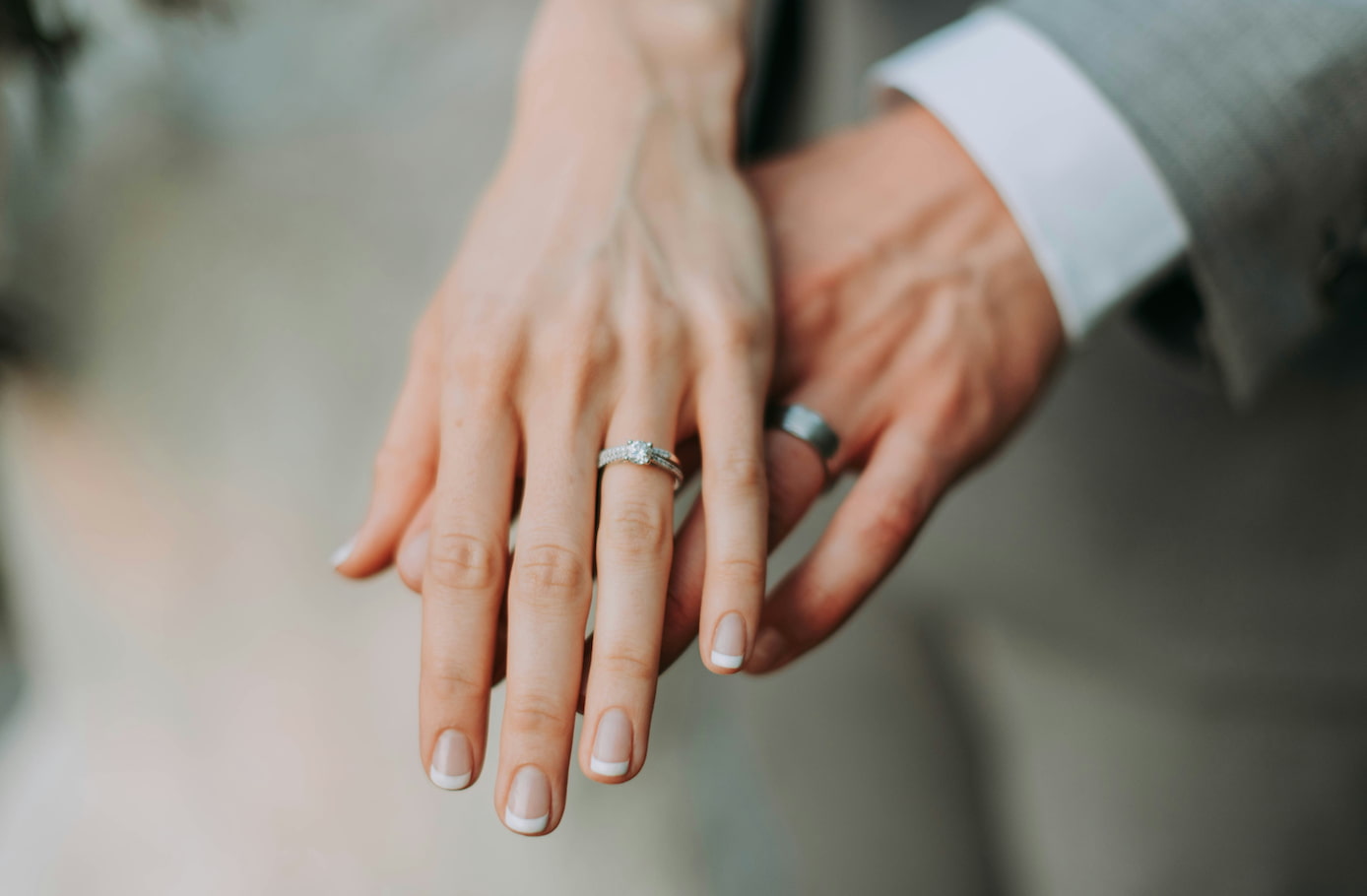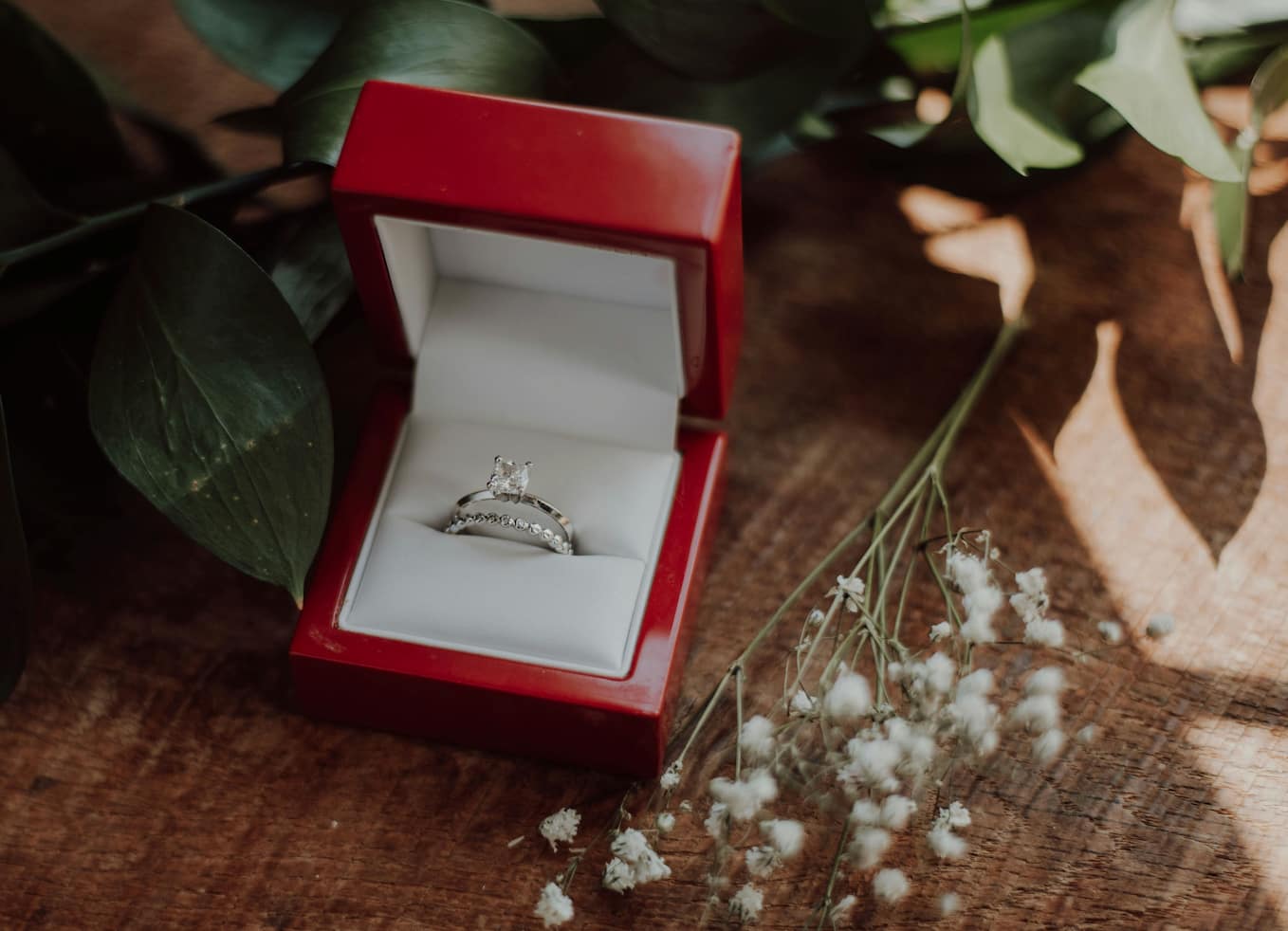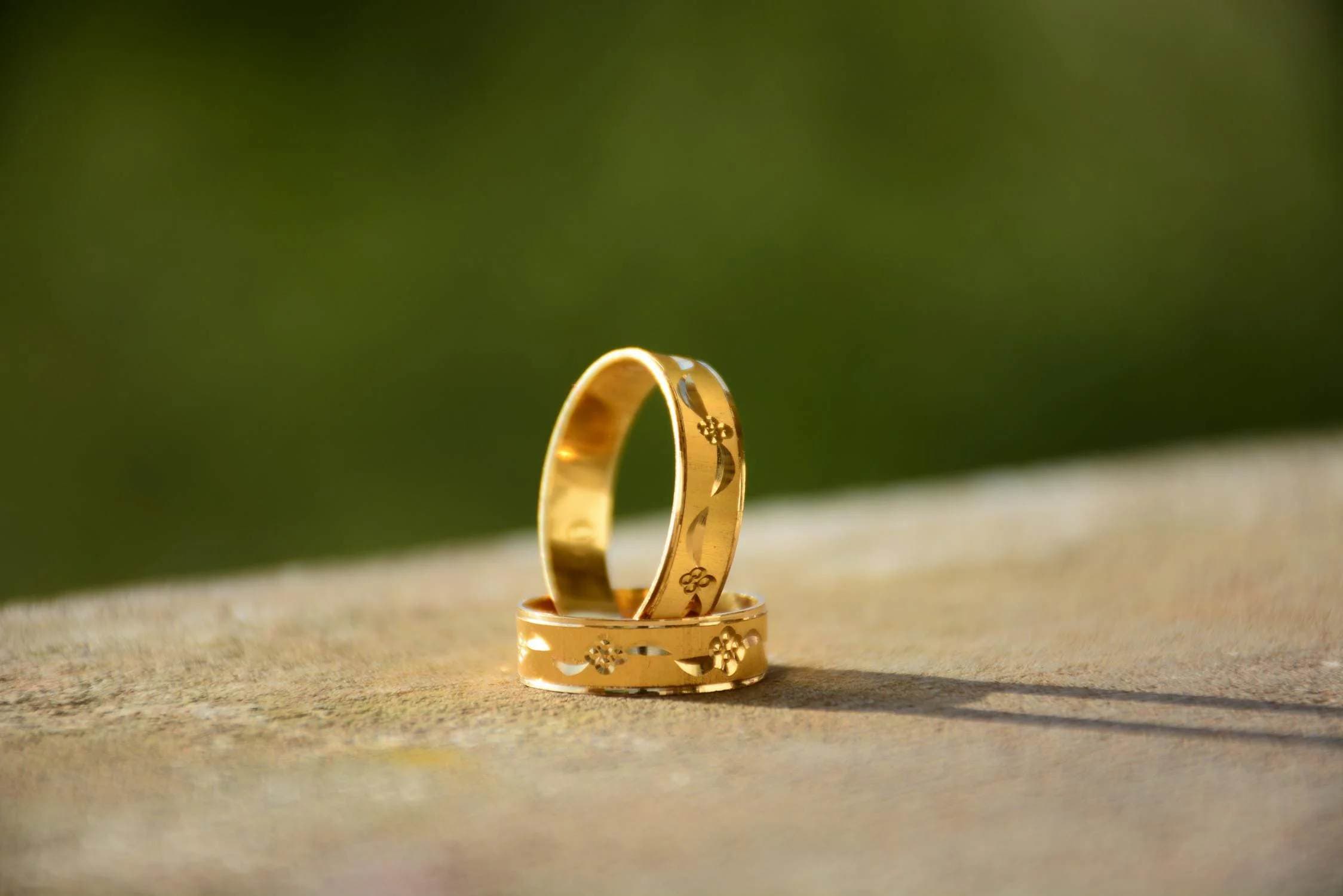If you are ready to take the big step and propose, or are already in the throes of wedding planning, selecting the right wedding ring is a crucial decision. If you find yourself wondering, "How much should a wedding ring cost?" you're not alone. This symbol of love and commitment is a significant investment that demands thoughtful consideration.
In this guide, we'll walk you through the essentials of wedding ring costs, from the average costs and factors that influence these prices to strategic tips for saving money without compromising on quality. By understanding these aspects, you can make an informed decision that aligns with your financial and emotional expectations.

There isn't a one-size-fits-all answer to "How much money should you spend on a wedding ring?" It depends on the tradition, budget, and individual preference. Traditionally, the rule of thumb for buying a wedding ring was to spend two to three months' salary. This guideline, popularized by diamond companies in the early 20th century, suggested that such an investment was appropriate to symbolize the significance of the commitment. For instance, if someone earned $5,000 a month, they might have been expected to spend between $10,000 and $15,000 on a ring.
However, this notion is increasingly viewed as impractical in today's world. Modern couples are prioritizing financial stability over extravagant spending. Economic realities such as student loans, housing costs, and the desire to save for future experiences or investments have reshaped how much should spend on a wedding ring.
Many now allocate their budget based on personal financial circumstances rather than adhering to an outdated rule. They might spend less on the ring and more on the wedding, honeymoon, or even future savings. This shift reflects a broader trend of valuing practicality and long-term financial health, allowing couples to celebrate their love without compromising their financial well-being. Ultimately, the worth of a wedding ring lies in its sentimental value rather than how much a wedding ring is.

When discussing how much is the average wedding ring, it's important to differentiate between engagement rings and wedding bands, as each typically involves different considerations and expenses. An engagement ring, the one given at the proposal, is often more elaborate than wedding bands and typically feature one or more gemstones, with diamonds being the most popular choice.
According to the Knot's 2023 Real Weddings Study, the average cost of an engagement ring in the United States is around $5,500, with 50% of the respondents spending between $1,000 to $4,000. The price can vary widely based on the size and quality of the central stone, the complexity of the setting, and the type of metal used.
Wedding bands, those exchanged during the wedding ceremony, are usually simpler than engagement rings and are often plain metal bands, though some may include diamonds or other gemstones set around the band. The average cost for a wedding band ranges between $500 to $2,000. And when asked how much should a man's wedding ring cost, it typically falls at the lower end of this rang, around $500. The choice of metal and any additional design features like engraving or inlaid stones can affect the final cost.

When it comes to how much wedding rings cost, it can be influenced by a variety of factors, each contributing to the final price tag. Here are some key factors that affect the cost of a wedding ring:
The choice of metal significantly impacts how much are wedding rings. Traditional metals like gold and platinum are generally more expensive. Gold's price varies based on its karat (purity), with 24-karat being the purest and most expensive. Platinum, due to its rarity and durability, commands a higher price. Alternative metals like titanium and tungsten offer cost-effective and contemporary options.
The inclusion of gemstones, particularly diamonds, can dramatically increase the cost of a wedding ring. The value of a diamond is determined by the four Cs: cut, clarity, color, and carat weight. A high-quality diamond with excellent cut, clarity, and color can significantly raise the cost. However, smaller carat weights or lower grades in clarity and color can help reduce costs without compromising the stone's overall beauty.
Alternatives to diamonds, such as sapphires, emeralds, or rubies, can offer unique aesthetics and potentially lower costs. Moissanite, in particular, has become a popular and affordable alternative, offering brilliance and durability similar to diamonds.
Intricate designs and custom-made rings often come with a higher price tag. For instance, a handcrafted ring with intricate filigree work or a custom engraving will be more expensive than a simple, mass-produced band. However, its uniqueness and personalization can be worth the extra expense. Besides, skilled craftsmanship ensures that the ring is beautiful, durable, and unique.
Renowned jewelry brands often charge a premium for their name and reputation. A ring from a high-end brand like Tiffany & Co. or Cartier will likely cost more than a similar ring from a lesser-known or independent jeweler. While these rings may come with assurances of quality and exceptional service, comparable options from lesser-known brands or independent jewelers can provide similar beauty and craftsmanship at a lower cost.
Economic factors and market conditions, including fluctuations in the prices of precious metals and gemstones, can affect the overall cost of a wedding ring. For instance, during periods of economic instability or high demand, the price of gold and diamonds may increase. Staying informed about market trends can help you purchase at an opportune time.
Prices for wedding rings can also vary by location due to differences in market demand, availability of materials, and local economic conditions. For instance, prices in large metropolitan areas or affluent regions might be higher than in less populous areas.
Purchasing a wedding ring is a significant investment, but it doesn't have to break the bank. Here are several strategies you can employ to save money while still finding a ring that you love and that symbolizes your union beautifully:
1.Set a Budget: Begin your search with a clear budget in mind. Your spending limit helps narrow down options and prevents you from being swayed by pricier choices. Stick to your budget to avoid financial strain.
2.Consider Alternative Gemstones: Diamonds are traditional but not obligatory. Alternative gemstones such as moissanite, sapphires, or lab-grown diamonds can provide stunning beauty at a fraction of the cost. These options often offer unique colors and qualities that set them apart.
3.Choose a Simple Design: Intricate designs and custom engravings add to the cost of a ring. Minimalist styles can be just as elegant and meaningful while staying within budget.
4.Shop During Sales: Take advantage of sales and promotions offered by jewelers. Significant discounts are often available during holidays, anniversaries, or end-of-season sales. Timing your purchase to coincide with these events can yield considerable savings.
5.Buy Online: Online jewelers often offer competitive prices compared to brick-and-mortar stores. Without the overhead costs of physical locations, online retailers can pass savings on to customers.
6.Consider Vintage or Second-Hand Rings: Vintage or pre-owned rings carry a charm and history that new rings can't replicate. They can also be more affordable. Many jewelers specialize in vintage pieces, offering a range of styles from different eras.
7.Negotiate: Don't be afraid to negotiate the price with the jeweler. Many are willing to offer discounts or additional perks, especially if you're making a significant purchase. It never hurts to ask for a better deal.
Navigating the costs of a wedding ring can be as challenging as choosing the design itself. Understanding how much should a wedding ring cost and recognizing the pricing factors can guide you in making a thoughtful decision. With the shared savvy strategies to save money, you can also find a ring that encapsulates your commitment without compromising your financial well-being. Remember, the true value of a wedding ring lies not in its cost but in the love and promise it represents. So, choose wisely, spend thoughtfully, and let your ring be a testament to a love that's timeless and priceless.
A common guideline is that a man might consider spending about two to three months' salary on a wedding ring. However, this rule isn't set in stone and spending should align with personal financial situations and priorities. It's important to budget wisely and choose a ring that is meaningful and affordable, rather than strictly adhering to this old standard.
Yes, $10,000 is a good budget above average for a wedding ring. It allows for a wide range of options in terms of materials, gemstones, and custom designs, including premium options like larger diamonds or rare gemstones.
Traditionally, it is customary for the bride and her family to purchase the groom's wedding ring, just as the groom and his family are expected to pay for the bride's engagement and wedding rings. However, modern couples often choose to approach these traditions flexibly, with some opting to split the cost of wedding rings or pay for their own individually based on personal preference or financial considerations.
Learn how to wear wedding rings properly. Understand their symbolism, explore different styles available, and get tips on styling them with other jewelry.
Read MoreFind how to make an engagement ring with our guide, from gathering materials to achieving a professional finish. Craft your own symbol of love today!
Read MoreCan you sleep with earrings in? How to sleep with them safely and choose sleep-friendly earrings for a safe and comfortable night's rest. Read the article to find out.
Read MoreWhat are leverback earrings? The article tells you everything about them, including the benefis of wearing this jewelry, how to style them, and how to keep it in good condition.
Read More